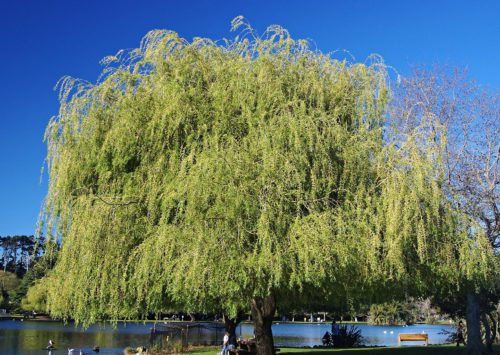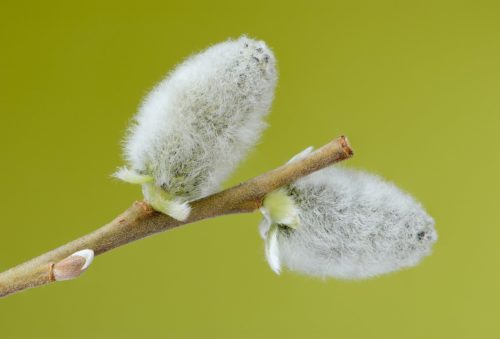Willow, deciduous tree or shrub belonging to the willow family (Salicaceae). The willow family has + three hundred species plus numerous hybrids.
Also known as:
Sallows
Osiers
You are viewing the mobile-adapted version of the page.
The one for tablets, laptop and desktop also provides general information, such as origin, toxicity and cultivation.
Willow – (Salix), deciduous tree or shrub belonging to the willow family (Salicaceae). The willow family has + three hundred species of typically deciduous trees and shrubs, found primarily on moist soils in cold and temperate regions.
Willows take many forms:
Creeping willow (Salix repens), shrub form, stays low,
Wiggerly Willow (Salix matsudana), tree, grows 10 m. tall,
Babylon willow (Salix babylonica), tree, can grow to up to 12 m.,
Weeping willow (Salix pendula), wide-growing tree, 10 to 15 m tall.
White willow (Salix alba), substantial tree that can reach 25 m. tall.
Bebb willow (Salix bebbiana) is a multi-stemmed shrub that naturally grows alongside streams, lakes, and bogs.
Willows are among the pioneers among plants: they colonize fallow land, just like birches and poppies, for example. Willows need plenty of light and preferably a moist location. You can therefore find them a lot along streams and waterways.
Willows are important suppliers of pollen (spring) for insects.
A special form of willow is the “pollarded willow,” a willow that is budded at + two meters in height. At the “pollard” the willow produces watersprouts called “willow branches”. The willows are used for the manufacture of baskets and wickerwork screens. Each winter the sprouts are pruned away (pollarded). Pollarded willows provide a nesting habitat with their dense vegetation and hollow trunk for birds, bats and insects.
Willows do not age beyond forty and fifty years due to storm damage and watermark disease.
Bugs
Deformed and crumpled leaf: aphid.
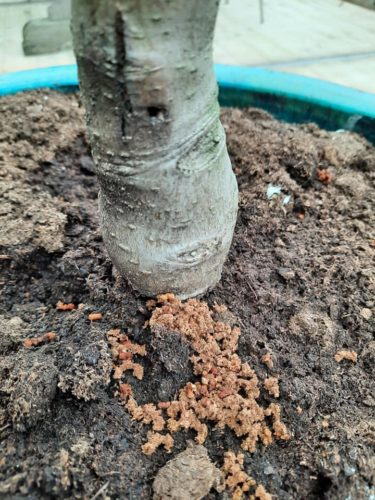
Large, oval holes in the trunk. Moist sawdust in the area. Special detail: the borehole smells like vinegar because the caterpillar produces acetic acid to digest the wood: caterpillar of the goat moth (Cossus cossus).
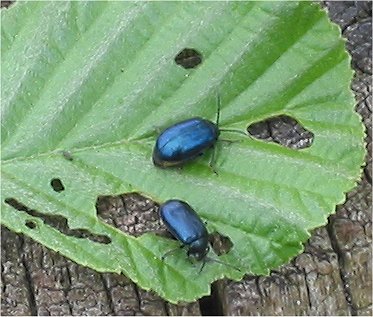
Elongated holes in the leaf: Alder Leaf Beetle (Agelastica alni).
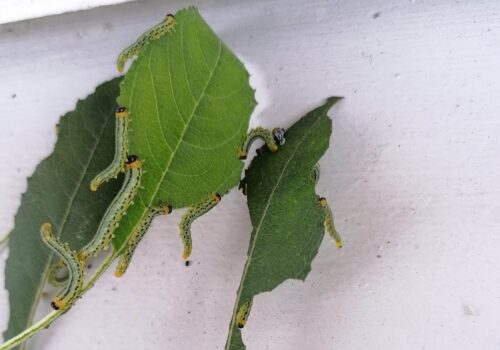
The leaf is attacked: larvae of the willow sawfly (Nematus pavidus).
Fungi & diseases
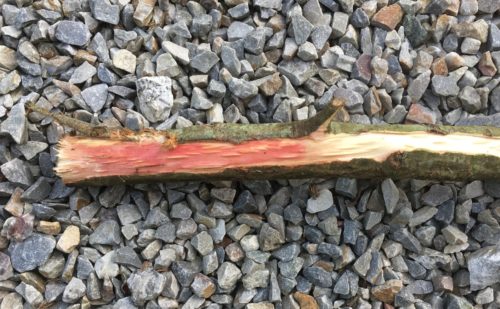
Leaf wilts, turns brown and dries out. The tree sap in the branches turns red. At the boundary of dead and living wood, bushy groups of watersprouts form: watermark disease (Brenneria salicis).
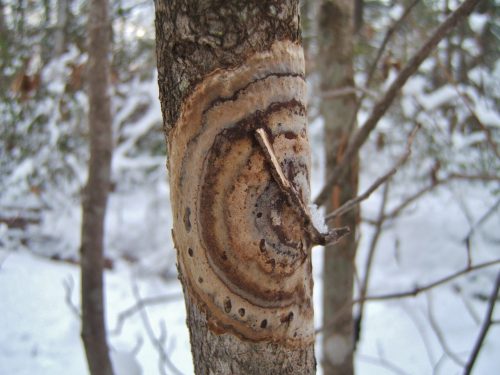
Crossing dead branches are “glued” together: Glue crust fungus (Hymenochaete corrugata) – rare.
Other
Willow is not very a strong tree; strong winds and storms can cause branches to break off. Willows along the waterfront have little grip on the watery soil and can therefore easily be blown over.
Trees affected by the caterpillars of the willow sawfly are prone to blow over.

